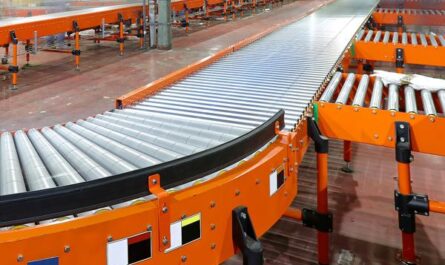As vehicles integrate more electronic components and advanced driver assistance systems, in-vehicle networks play an increasingly important role in supporting connectivity within the vehicle. Traditional automotive networks using technologies like CAN and FlexRay are showing their limitations with growing bandwidth and latency needs. This has led automakers to explore next generation IVN technologies that can meet emerging requirements for data handling inside next-gen vehicles.
In-vehicle Networks and the Rise of Data Exchange
Modern vehicles are filled with electronic control units (ECUs) that need to communicate data for various critical functions ranging from engine control to advanced safety features. Traditional automotive networks were designed mainly for message-based control applications with relatively low data throughput needs. However, with the proliferation of screens, surround view cameras, advanced driver assistance systems and infotainment systems, data exchange within the vehicle is growing exponentially. This is putting pressure on existing networks in terms of bandwidth constraints and transmission delays. Next generation IVN solutions are looking to support seamless high-speed data transfer to enable new in-cabin experiences and automated driving capabilities.
Ethernet Gaining Prominence as a Reliable Connection Standard
To meet the surging data communication demands, Ethernet is emerging as the leading connectivity standard for next generation Next Generation In-Vehicle Networking. Automakers are exploring both traditional Ethernet as well as variants designed specifically for automotive use cases. Compared to earlier serial networking technologies, Ethernet offers significantly higher maximum bandwidth potential in the gigabit range. It also provides features like quality of service (QoS), which is crucial for supporting safety-critical real-time applications seamlessly alongside bandwidth-hungry infotainment systems. Leading auto suppliers are developing Ethernet-enabled ECUs and switches tailored for the harsh under-hood environment with robust protocol support.
Enabling Seamless In-vehicle Experiences
With reliable multi-gigabit Ethernet connectivity available within the vehicle, future drivers will experience advanced personalization, infotainment and assistance features. Passengers will be able to access in-transit entertainment, work or get task assistance through high-definition displays connected via IVN. Seamless streaming of 4K/8K videos will be possible. Surround view camera systems and advanced driver monitoring cameras will provide 360-degree real-time visibility. Information from various in-vehicle sensors will flow smoothly to centralized driver assistance ECUs enabling higher levels of automated driving. Passengers can remain connected to their digital lives while traveling with reliable high-speed WiFi Hotspots inside the vehicle.
Challenges in Ensuring Security and Privacy
While next generation IVN platforms promise to enhance passenger experience, their highly connected nature also increases cybersecurity risks within the vehicle network. With more ECUs connecting to each other and potentially to external networks, the attack surface grows manifold. Hackers could potentially exploit vulnerabilities to gain control of critical systems like brakes or engine control. There are also privacy concerns regarding collection of passengers’ personal data through various in-vehicle sensors. Automakers and suppliers are working on multi-level security architectures, authentication protocols and encryption methods to protect IVN while allowing functionality. Technologies like blockchain, ID-based encryption and hardware security modules hold promise but ensuring foolproof protection remains an evolving challenge.
Requirements for Wireless and Multi-Domain Connectivity
Next generation vehicles are also envisioned with seamless handovers between wireless connections inside and outside the vehicle. For example, Wireless Access in Vehicular Environments (WAVE) enables vehicle-to-everything (V2X) communication with other devices. Cellular Vehicle-to-Everything (C-V2X) provides LTE-based connectivity for advanced applications. On-board WiFi and LiFi networks allow wireless device connectivity within the vehicle cabin. Seamlessly bridging these diverse in-vehicle and outside networks while satisfying strict real-time constraints is another challenge for next generation IVN solutions. Automotive Ethernet variants combined with multi-radio integrated chipsets hold potential for enabling sophisticated multi-domain connectivity platforms of the future.
Transition to Ethernet Requires Significant Investment
A shift to Ethernet as the primary IVN technology necessitates a complete overhaul of the existing automotive electronic/software architecture. Auto manufacturers and suppliers must invest heavily in Ethernet-enabled ECU, router and switch development. They also need to enhance tools and processes for designing, integrating and validating complex Ethernet networks. Extensive reliability validation under various environments is critical to ensure robust production deployments. Significant re-skilling of the existing workforce is required to service the sophisticated networking infrastructures of next generation cars. While the eventual platform flexibility and functionality gains are attractive, the transition costs pose difficulties especially for smaller manufacturers and aftermarket suppliers.
Outlook
As vehicles evolve into intelligent mobility platforms, in-vehicle networking will continue playing an increasingly strategic role. While the future remains uncertain, Ethernet along with variants like AUTOSAR and AVB seem poised to become the dominant connectivity standard for next generation IVN to enable automated driving, immersive passenger experiences and advanced features. Automakers, suppliers and technology providers are working collaboratively to address challenges around security, reliability, and integration complexity associated with the transition. With continued innovation and collaboration across industries, next generation IVN has the potential to transform mobility and transportation in the coming decade.
*Note:
1. Source: Coherent Market Insights, Public sources, Desk research
2. We have leveraged AI tools to mine information and compile it




